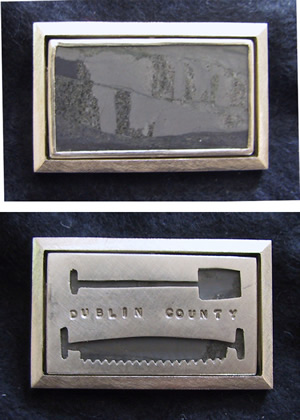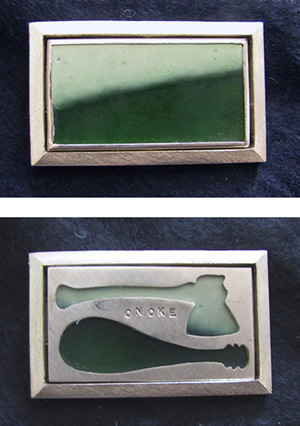|
Since graduating from Otago Polytechnic School of Fine Arts in
1973, David McLeod has worked in sculpture from
the monumental commissions to miniature carvings. During the last
twenty-five years, he has taught at a tertiary level in sculpture,
3D design and jewellery, culminating in the running of the jewellery
section of the School of Art in Dunedin from 1990 till his resignation
in 2000 to pursue his arts practice fulltime. David graduated with
an M.A. in Jewellery from Monash University in 1999. McLeod currently
works with three other jewellers and designers at SHED Workspace
in Dunedin New Zealand.
 Box one( Green
Ribbons to fasten)
' I have been gradually making myself comfortable and getting
everything nice about me---- -------My house and garden are like
a picture.' F.E. Maning |
My work is characterised by combinations of
media and imagery to create narrative works. My master’s thesis
‘South looking East’ explored the history and potential of the
Japanese narrative arts of Ojime, Netsuke, and Inro. I travelled
to the subantarctic island south of New Zealand to explore
notions of the souvenir. This led to further research in the use
of etching, leading to the use of Japanese alloys of Shakudo and
Shibuichi to provide a means of transferring images with a deep
etch and background of fine metals of gold and silver. I live in
St. Kilda with my wife and two children in an old villa surrounded
by trees, where I pursue my other passions of growing Trilliums
and Fritillaries. |
 Box two (Blue
Ribbons to fasten)
Image of approach to Hobart Town from early map in the Hocken
collection. |
These three groups of commemorative brooches
seek to express the some of the changes, and contradictions of F.E.
Maning’s life in the colonies. The work explores aspects of the Maning
family’s migration from Ireland to Hobart in 1824, and the subsequent
move to the Hokianga in New Zealand in 1931 of their son Frederick
Edward Maning. The first group refers to the localities he lived in—Jhonsonville
in Dublin County Ireland, Bruney Island and Hobart Town, and Onoke in
the Hokianga in NZ. The second group relates to a letter sent to his
brothers in 1845, when he spoke of a shipment of native plants from
the Hokianga that he was sending to family and friends in Hobart. The
third group relates to the contrast between the idealism that
motivated the shifts in his life with the reality of the situations he
encountered. The works use a range of materials from Pounamu (N.Z.
Nephrite) Pakohe (N.Z. Argillite), etched Shakudo and Shibuichi, and
repousséed and pierced metals.
|
 Box three (Red
Ribbons to fasten)
s"-----that the laws of England were requisite to restrain and
protect British subjects, but to British subjects alone should
they be applicable ."
F.E. Maning |
The collections and the services of the Hocken
Library in Dunedin and the Tasmanian State Library have been
invaluable in the research for these works. |
David McLeod 2002
|



